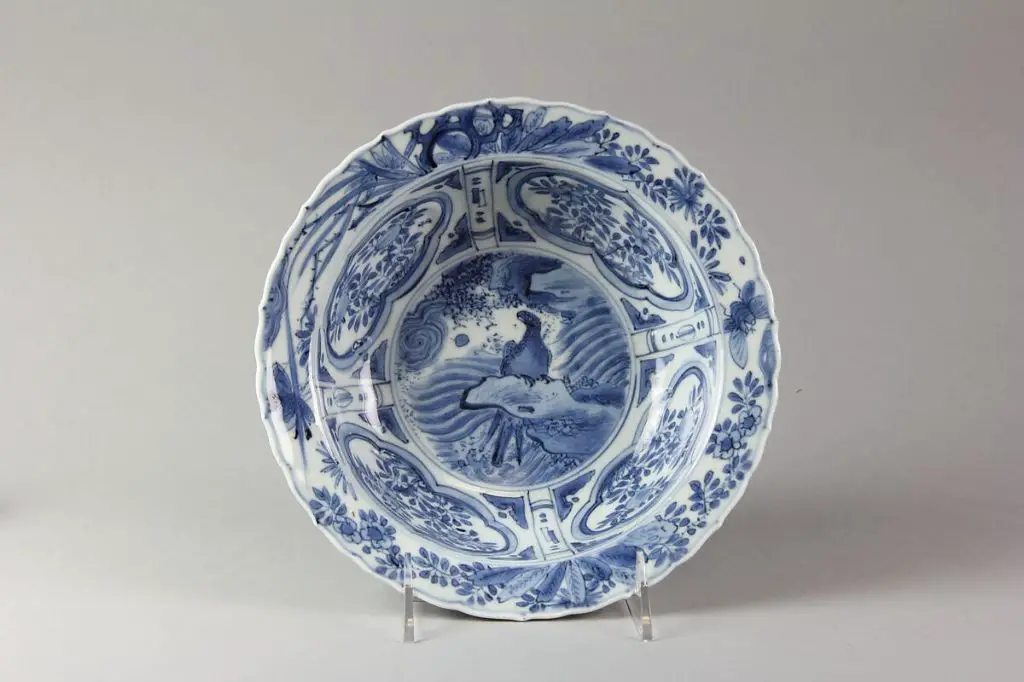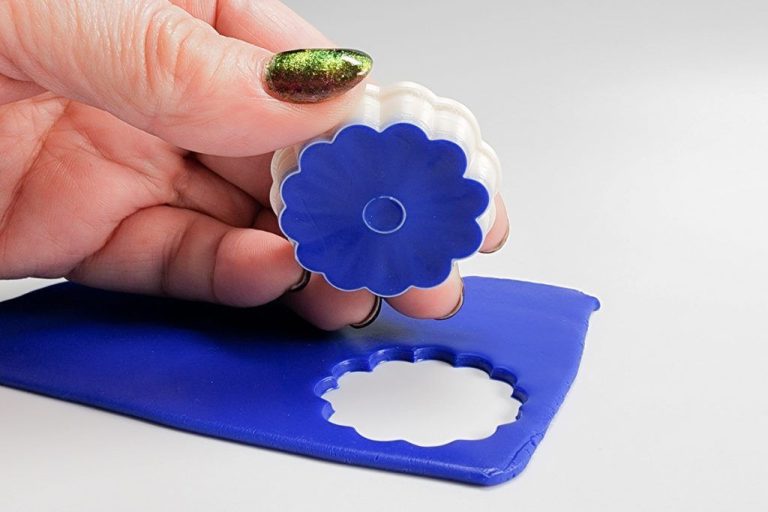Which Dynasty Did The Blue And White Pottery Belong To?
Blue and white pottery has a long and significant history in Chinese porcelain production. The blue and white style first emerged in the Yuan dynasty in the 14th century and then reached the height of popularity during the Ming dynasty in the 15th and 16th centuries. The distinctive blue color comes from cobalt oxide which was imported from Persia. The contrasting white background is created from applying a glaze to the clay before firing. Blue and white porcelain became famous for its beauty and was exported in large quantities along the maritime trade routes, spreading its popularity around the world. It became one of China’s most recognizable porcelain styles and inspired imitation by pottery makers globally. Blue and white ceramics have remained an important part of Chinese artistic tradition and porcelain production over many dynasties.
Origins
Blue and white porcelain first appeared during the Tang dynasty (618–906 CE) and consisted of course greyish bodies with simple blue painted decoration. However, true blue and white porcelain with refined bodies and complex designs emerged during the Yuan dynasty (1271–1368 CE). Some of the earliest surviving examples of true blue and white porcelain come from the Yuan dynasty kilns in Jingdezhen, which was already an established center for porcelain production. These early pieces had a thin, transparent glaze and used cobalt blue pigment for decoration. Designs were simple and sparsely painted in a minimalist style. According to the Victoria and Albert Museum, “First appearing in the Tang dynasty (618 – 906), early blue-and-white ceramics were made with a coarse, greyish body. In the Yuan dynasty (1279 –1368), potters began to use refined white porcelain bodies made from kaolin clays mixed with powdered petuntse stone.” The quality and complexity of blue and white porcelain advanced rapidly during the Yuan dynasty, laying the foundations for the more famous examples produced later during the Ming dynasty.

Ming Dynasty Perfection
Blue and white porcelain reached its peak during the Ming dynasty in China (1368-1644). The Ming emperors were great patrons of the arts, and porcelain production flourished during this period.
Some of the most iconic and finely crafted pieces of blue and white porcelain come from the Ming dynasty. Famous examples include the classic double gourd vases, moonflasks, and kendi bottles painted with intricate designs like landscapes, flowers, birds, and figures. The glazes became very refined, with a brilliant cobalt blue painted on smooth, white porcelain bodies.
Decorative themes expanded greatly as well. In early Ming reigns, dragon and cloud motifs were prevalent. Later emperors enjoyed Buddhist, Daoist, and landscape themes. The Xuande emperor (1425-1435) favored antique bronzes, so many Xuande porcelain pieces imitated archaic ritual vessels.
By the late Ming, European tastes started influencing designs, with objects like Kraak porcelain being exported abroad. The quality and beauty of Ming blue and white is unmatched in its delicacy and artistry.
Sources:
https://www.ebay.com/itm/185932419529
https://www.ebay.com/itm/185812644648
Imagery
Blue and white porcelain from the Ming Dynasty features common motifs like flowers, animals, and landscapes. Lotus flowers and peonies were particularly popular floral motifs during this period. These flowers were depicted in great detail, with delicate petals and twisting stems. Bamboo was also a favorite subject, valued for its resilience and upright nature in Confucian philosophy. Animal motifs included fish, often carp or goldfish, as well as deer, cranes, phoenixes, and dragons. Landscape scenes portrayed idealized Chinese mountains and rivers, little rural villages, and famous sites like the West Lake in Hangzhou.
The color palette was limited to underglaze blue decorative painting on a white background. But within this limited style, there was incredible creativity. The cobalt blue pigment allowed for shading and great artistic expression. Images of fish or swimming dragons were depicted with a sense of motion. Flowers and trees appeared to sway gently, bringing the scenes to life. The blue and white design showcased both simplicity and artistry.
Techniques
Ming dynasty blue and white porcelain was famous for its exquisite cobalt blue underglaze decoration. The blue pigment used was imported cobalt oxide that was ground into a fine powder and mixed with water to produce the vivid blue color.
The blue decoration was applied to the porcelain before it was glazed and fired. This underglaze technique allowed the blue color to fuse into the glaze, producing a depth and brilliance that overglaze enamels could not achieve.
Another key technique was the use of intricate carved decorations under and over the glaze. Complex motifs like dragons, phoenixes, flowers, and scrolling vines were finely carved into the porcelain body before firing. The carved areas provided a subtle three-dimensional quality and textural contrast to the smooth glazed surfaces.
Mastering these cobalt underglaze and carved decoration techniques was one of the hallmarks of Ming dynasty porcelain production and a key factor in its artistic mastery and global popularity.
Trade
Porcelain was an important export for China during the Ming Dynasty. Beautiful blue and white porcelain was highly sought after around the world and traded extensively via the Silk Road routes. Merchants traveled these overland and maritime routes to trade Chinese porcelain in Europe, the Middle East, and other parts of Asia. There was great demand among the elites and nobles of various kingdoms to obtain these fine Chinese ceramics.
By the early 1500s, Portuguese traders began bringing Ming porcelain back to Europe by sea. Due to its rare beauty and perceived exoticism, Chinese blue and white porcelain was very desirable among European aristocracy and royalty. However, China kept the secrets of its porcelain making techniques confidential for centuries, giving them a monopoly on quality porcelain production.
Decline
Under the Qing dynasty from 1644 to 1912, the quality and craftsmanship of blue and white porcelain deteriorated. As demand for porcelain grew in Europe, production became increasingly industrialized and focused on mass production over artistry. Many of the exquisite techniques and production standards of the Ming dynasty were abandoned. According to www.anderson.k12.ky.us/Downloads/07bluewhite.pdf, Qing blue and white wares were often “hastily executed or carelessly decorated.” Glazes grew thicker and designs simpler. Cobalt oxide supplies also became inconsistent, resulting in duller blue tones.
While the Qing dynasty continued to produce blue and white porcelain, quantity was emphasized over quality. Designs grew repetitive and uninspired. The artistic mastery of Ming dynasty potters was lost. Workshops churned out porcelain for export to Europe in vast quantities, leading to a decline in craftsmanship and artistry compared to the exceptional ceramics of the Ming era.
Revival
Blue and white pottery regained popularity in the 20th century after a long period of decline. According to this article, interest in the classic blue and white aesthetic saw a revival in the UK in 2010. New designers began producing updated takes on traditional blue and white ceramics and pottery. As the article states, “Not one but two unrelated UK projects have come to our attention this week that look to celebrate and revive the quintessential blue and white pottery aesthetic.” This renewed interest speaks to the timeless appeal of blue and white pottery across many eras.
Projects like the one described in this Pinterest pin point to a nostalgia for the techniques, imagery, and legacy of historic blue and white ceramics. While staying true to tradition, contemporary designers are also putting a modern spin on this classic art form. The blue and white aesthetic continues to capture people’s imaginations centuries after its origins in the Ming dynasty.
Legacy
The artistic legacy of blue and white porcelain continues to influence ceramic arts. After Chinese porcelains started being imported to Europe by the Dutch East India Company in the early 1600s, potteries started to emulate the blue and white style, especially in Delft, Netherlands. This “Delftware” became extremely popular and was even copied by early American potteries.
In the late 19th and early 20th centuries, interest in collecting and studying Ming porcelain grew. Archaeologist and curator Langdon Warner acquired many fine examples while working in China in the 1920s-30s that now form the core of Harvard’s museums. Scholar John Calvin Ferguson’s books introduced Ming wares to mainstream America. Curator John Alexander Pope combined his connoisseurship with scientific analysis of glazes and clay bodies to push knowledge forward. Wealthy patrons like William Thompson Walters, Joseph Taylor Robinson and Stephen Junkunc III built collections that ultimately were donated to major museums.
Blue and white designs like Blue Willow remain iconic today. The pattern was created by Thomas Minton around 1780 by combining Chinese motifs like pagodas, bridges and peacocks. It became the most popular and reproduced pattern in England by the early 1800s and soon spread to America. The nostalgic and romantic scene continues to decorate dishes and home goods around the world.
Significance Today
Blue and white porcelain from the Ming Dynasty remains highly valued and collectible today. Its beauty and craftsmanship are still admired nearly 600 years after it was first created. According to the World History Encyclopedia, “Ming porcelain ranks amongst the finest ceramics ever produced, characterised by its vivid cobalt-blue underglaze which gave depth and extra lustre to the designs incised by skilled artisans.”
Many of the best examples of Ming blue and white porcelain are now housed in major museum collections around the world. For instance, the British Museum has over 40,000 pieces in its collection spanning the 14th to 19th centuries (https://www.worldhistory.org/Ming_Porcelain/). The renowned Percival David Collection at the British Museum contains some particularly fine examples. The Metropolitan Museum of Art in New York and the National Palace Museum in Taipei also have significant holdings.
These museum pieces are considered national treasures in many cases. Their artistry and historical significance make Ming porcelain extremely valuable on the private market as well. A Ming vase sold for over $85 million at auction in 2014, setting a record for Chinese porcelain (https://www.anderson.k12.ky.us/Downloads/07bluewhite.pdf). This demonstrates that Ming blue and white porcelain is still prized by collectors and museums today as one of the high points of Chinese art.





